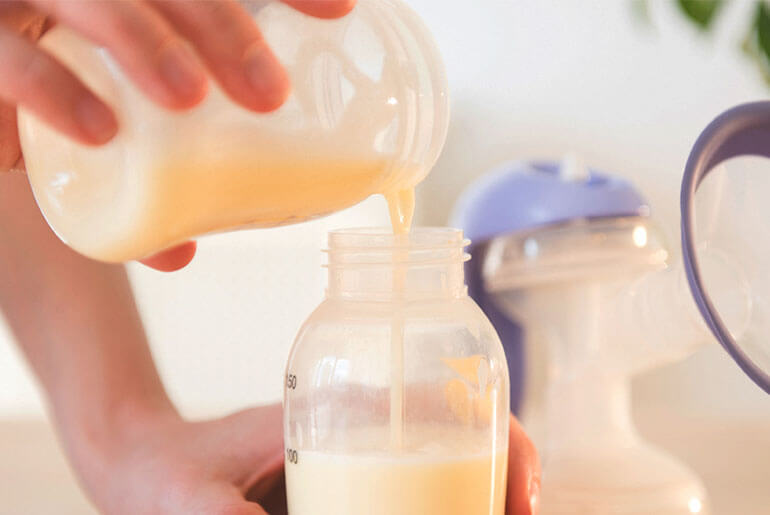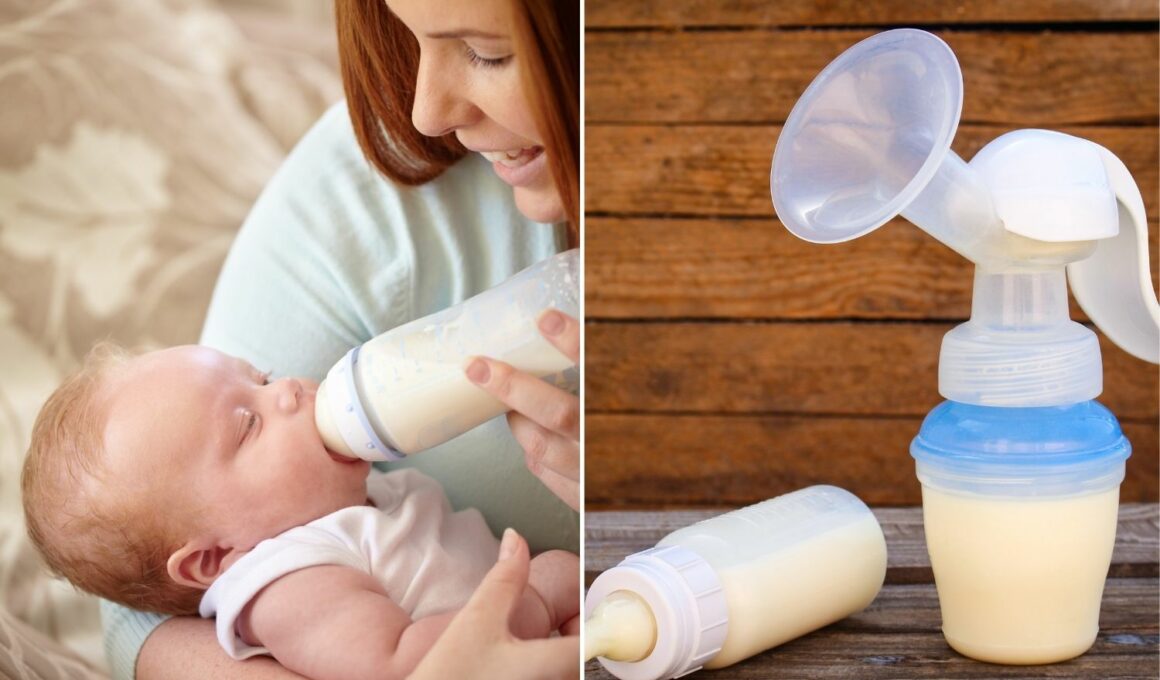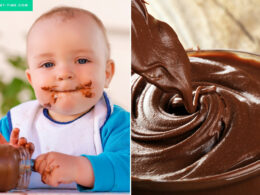In This Article Show
Key Points
- It is best to stay away from mixing warm and cold breast milk together.
- One of the serious implications of mixing breast milk at two different temperatures is the high risk of bacterial growth.
- Storage of breast milk is very much important. When stored improperly, the chances of bacteria growth are also increased. And feeding your baby with contaminated milk can lead to food-borne illnesses.
As a nursing mother, one of the challenges you may encounter is how to store and combine breast milk safely. One common question that arises is whether you can add warm breast milk to cold breast milk, or vice versa.
While it may seem practical to mix milk to make a bigger bottle or to achieve the right temperature, it is important to understand why this practice is not recommended.
The major reason why one can’t add warm breast milk to cold breast milk is that mixing warm and cold breast milk can be dangerous for your baby’s health as it increases the risk of bacteria growth in the breast milk.
Bacteria thrive in warmer environments, so if you combine warm and cold breastmilk, the bacteria will grow faster than if they were kept separate. This could lead to food poisoning or other illnesses for your baby.
This article explores and digs deeper into the reasons why you should avoid adding warm breast milk to cold breast milk and provides tips on how to store and combine breast milk safely to ensure your baby receives the best nutrition possible.
Great deals to snatch for your little ones 🎉
Understanding Breast Milk Temperature Mixing
When it comes to breastfeeding, there are two main types of breastmilk; foremilk and hindmilk. Foremilk is thinner in consistency than hindmilk and contains more lactose (the sugar found in dairy products).
It also has a higher water content than hindmilk which makes it easier for babies to digest. Hindmilk on the other hand has a thicker consistency due to its higher fat content which helps keep babies fuller longer after they have finished nursing.
The ideal temperature range for both fore and hind milk should be between 98°F – 100°F (37°C – 38°C). This range is important because it helps to ensure that the milk is not too hot or cold for your baby. If the temperature of the breastmilk is too high, it can cause discomfort and even burns in some cases.
On the other hand, if it’s too cold, your baby may not be able to digest it properly which could lead to digestive issues such as constipation or diarrhea. When mixing different temperatures of breastmilk together, you should always start with a lower temperature first and then gradually increase until you reach an ideal range between 98°F – 100°F (37°C – 38°C).
Why Combining Cold and Warm Breast Milk Is A No-Go

As a breastfeeding mom, you may have wondered if it’s okay to combine cold and warm breast milk. The answer is no, combining cold and warm breast milk can be dangerous for your baby. Here are 8 reasons why;
1. Bacterial Growth
When you combine cold and warm breast milk, the temperature of the mixture can become too high for your baby’s digestive system. This can cause bacteria to grow in the milk, which could make your baby sick.
2. Stomach Aches
When you mix cold and warm breast milk, the cold milk can cause your baby’s stomach to cramp up. This can lead to discomfort and even vomiting.
3. Diarrhea
When you mix cold and warm breast milk, the cold milk can cause diarrhea in your baby. This is because it takes longer for the body to digest cold liquids than warm ones.
4. Can Affect Babies’ Appetite
If you give your baby a bottle of mixed cold and warm breastmilk, they may not be as interested in eating as they would if you gave them just one temperature of milk at a time.
5. Less Nutritious
When you combine two different temperatures of breastmilk, some of the nutrients may be lost due to changes in temperature, or bacteria growth occurs when combining two different temperatures together.
6. It Could Lead To Overfeeding
If your baby drinks too much combined cold and warm breastmilk at once, it could lead to overfeeding which could make them uncomfortable or even sick from drinking too much at once.
7. Unpleasant Feeding Time
Mixing two different temperatures together during feeding time can make it unpleasant for both mommy and baby since neither will know what temperature their food is going to be until after they start drinking it.
8. Can Lead To Waste
Since mixing two different temperatures together makes it difficult for babies to drink all their food before it gets too cool or too hot, this could lead to wasted bottles which means more money spent on formula or extra trips out shopping for more supplies.
How To Properly Feed Babies Stored Breast Milk
Feeding your baby stored breast milk is a great way to ensure they get the nutrition they need. But it’s important to know how to properly feed babies stored breast milk so that you can keep them safe and healthy. Here are some tips on how to do just that;
- Before you feed your baby stored breast milk, make sure to check that it’s at a safe temperature. You can do this by placing a few drops on your wrist or inner elbow and making sure it feels warm but not hot. If it’s too hot, let it cool down for a few minutes before giving it to your baby.
- Stored breast milk tends to separate over time so be sure to shake the bottle well before each feeding in order to mix all of the nutrients together again. This will ensure that your baby is getting all of the nutrition they need from their meal.
- After each feeding, discard any remaining stored breastmilk as bacteria can grow quickly in these conditions and cause illness if consumed later on down the line. It’s a best practice just to throw away whatever isn’t used during one sitting so that you don’t have to worry about contamination later on down the road.
- Make sure you store any unused stored breastmilk in an airtight container in either a refrigerator or freezer depending on how long you plan on keeping it. This will help keep bacteria out and prevent spoilage which could lead to sickness if ingested by your little one.
What Is The Shelf Life Of Breast Milk?
When it comes to feeding your baby, breast milk is the best option. It’s full of essential nutrients and antibodies that help protect your little one from illnesses and infections. But how long does breast milk last? Knowing the shelf life of breast milk can help you make sure you’re providing your baby with safe, nutritious food.
The shelf life of breast milk depends on where it is stored. In general, frozen or refrigerated breast milk will last longer than room temperature storage. Here are some guidelines for storing and using expressed (pumped) breastmilk;
1. Room Temperature
Freshly expressed breastmilk can be kept at room temperature (77°F or 25°C) for up to 6 hours. After that time, it should be refrigerated or frozen immediately.
2. Fridge
Freshly expressed (pumped) breastmilk can be kept in a refrigerator set at 39°F (4°C) for up to 8 days. If you plan to use the milk within 4 days, it can be stored at room temperature (77°F or 25°C) for up to 6 hours.
3. Freezer
Breastmilk can be safely stored in a deep freezer at 0°F (-18°C) for up to 6 months without any significant loss of nutritional value or quality.
When freezing expressed milk, use containers made specifically for storing human milk like bottles with screw-on lids or bags designed for freezing human milk. Make sure to label each container with the date before putting them in the freezer so you know when they were first frozen.
Conclusion
Adding warm breast milk to cold breast milk is not recommended because it can lead to the growth of harmful bacteria, which can cause infections and other health issues in infants. It is essential to follow proper breast milk storage and handling guidelines to ensure the safety of your baby.
Always store breast milk in small portions and cool it quickly before refrigeration or freezing. When combining breast milk, ensure that it is of the same temperature for safety and to prevent waste. As a parent, your baby’s health should always be your top priority, and it starts with being aware of the proper storage and handling of breast milk.













